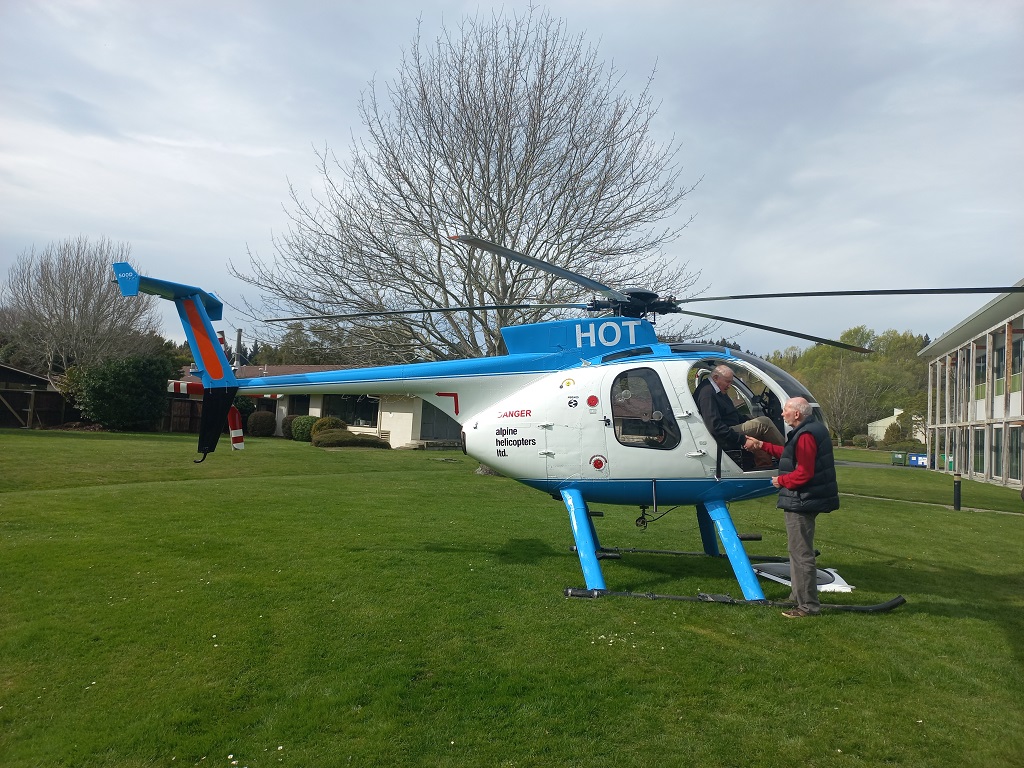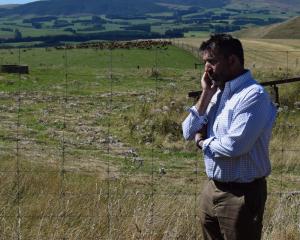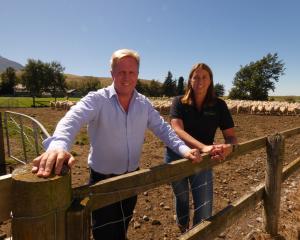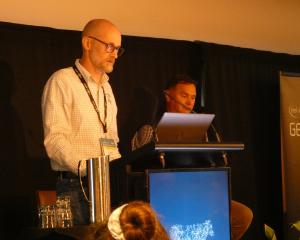AgResearch scientist Jamie Ward opened the speaking to nearly 140 people at an event to mark 50 years of deer farming science at the centre near Mosgiel.
He considered himself lucky to be working with "a wonderful animal, in a remarkable industry with special people," he said.
"He tangata, he tangata, he tangata — it is the people, it is the people, it is the people."
The event recognised "the little industry that could with the help of science".

The pair launched a fact-finding mission and got the first deer to the centre in October 1973.
Scientific papers, including product and deer management recommendations, were produced about 10 months after those deer arrived at Invermay, highlighting "the speed, energy and intensity put into the science and the industry in those early days".
He acknowledged the "bravery" of former centre director Jock Allison for backing the vision of Dr Drew.

He acknowledged the "passion, drive and enthusiasm" of the teams producing the "critical and world-leading science" at the centre for the past 50 years.
Dr Drew, speaking at the event, said the fact-finding mission included a stop to see Herbie Taylor at West Dome Station near Mossburn in Northern Southland.
Mr Taylor was running about 500 deer, which had been wild and were "live captured" by aviation entrepreneur Sir Tim Wallis.
"Les and I came away with an agreement we would borrow 90 hinds from West Dome."
The agreement made the centre liable for any animal which died, including newborn calves.

About 60 calves were born and come January, they began searching for a stag for the upcoming breeding season.
They acquired a hand-reared stag from West Dome Station, which they named "Herbie" after his owner.
The mounted head of Herbie shared the stage with the speakers at the event.
When Herbie was euthanised as an "old animal", his carcass weighed 146kg, Dr Drew said.
"It’s the biggest red deer carcass we’ve ever had."

He also acknowledged the work of Lincoln University professor Ian Coop, who once had wild deer captured by Sir Tim but stopped researching them due to a lack of resources, such as land and staff.
He himself had the resources needed and a programme was established at Invermay, Dr Drew said.
"The rest is history."
The celebration included a tour of the nearly 180ha deer farm in a 1976 Leyland Leopard bus.
The farm runs about 30 stags, 650 hinds and 450 deer up to one year old.
Leading the tour was former centre deer farm manager Adam Whaanga, who started at the farm as a cadet, aged 16, in 1983.
He finished working at the farm 27 years ago.
On the tour, he reminisced about the challenge of collecting blood samples from hinds sharing the same paddock as a stag during the roar.
A farm staff member would ride a motorbike to be chased by the stag — distracting it for long enough for other staff members to collect the necessary blood samples from the hinds.
"Luckily social media wasn’t around then," Mr Whaanga said.
On the tour, Mr Ward talked about a collection of antlers from six cloned stags.
The "remarkable but sensitive piece of science" included the birth of three cloned stags in 2004 — the first of their kind in the world, Mr Ward said.

Those stags were cloned using cells from the velvet antler of a stag — proving that velvet antler cells were also stem cells.
Five of the stags lived to a "ripe old age".
The cloned stags were kept in hard antler, which was "problematic" for staff as the stags fought regularly during the rut and were evenly matched, making it difficult for them to establish a pecking order.
The stags were never mated to hinds, he said.
On the tour, Invermay research associate Bryan Thompson spoke about a programme he was leading.
The programme was designed to monitor the behaviour of deer on different types of farms to find how they utilised the landscape, in a bid to gain a better understanding of the variations in the herd.
The scientific work included designing a GPS collar, which about 200 deer would wear to show how they utilised the resources available to them, he said.
Some deer bred in intensive situations did not perform well on a high country farm, and "vice versa, weaners come off high country and they don’t go as well as they should".
He hoped findings from the programme would allow deer to be selected for certain behaviour types.
Lunch at the event was prepared by Deer Industry New Zealand executive chef Graham Brown and featured venison and blueberry sausage rolls, venison sliders with Monteith’s Black onion jam and glazed, smoked venison ribs.

After the reflection, Deer Industry New Zealand board chairwoman Dr Mandy Bell thanked those at the celebration "who did the dreaming and the doing, who created the science to support our industry".
The industry would continue to collaborate with the science because the challenges the sector faced were continual, Dr Bell said.
"Science is critical across industry."
AgResearch chief executive Dr Sue Bidrose, who was speaking at the event, said the industry had come a long way.
"It’s astonishing that in 50 years, it has come from getting rid of a noxious pest to an industry that is at the top of its game and looking to become a $1 billion industry for
New Zealand."
At an event at Parliament last month, Minister of Agriculture Damien O’Connor challenged the deer industry to increase deer numbers and grow the sector from $161 million to $1 billion.
Sir Tim was flown in to the event for the final hour of the afternoon by his son Toby, in Sir Tim’s original Hughes 500 helicopter.
Mr Ward said Sir Tim’s arrival "capped off a brilliant day".
"It was very special and really touching to see everybody lining up to go up and have a chat with Tim in the chopper."














